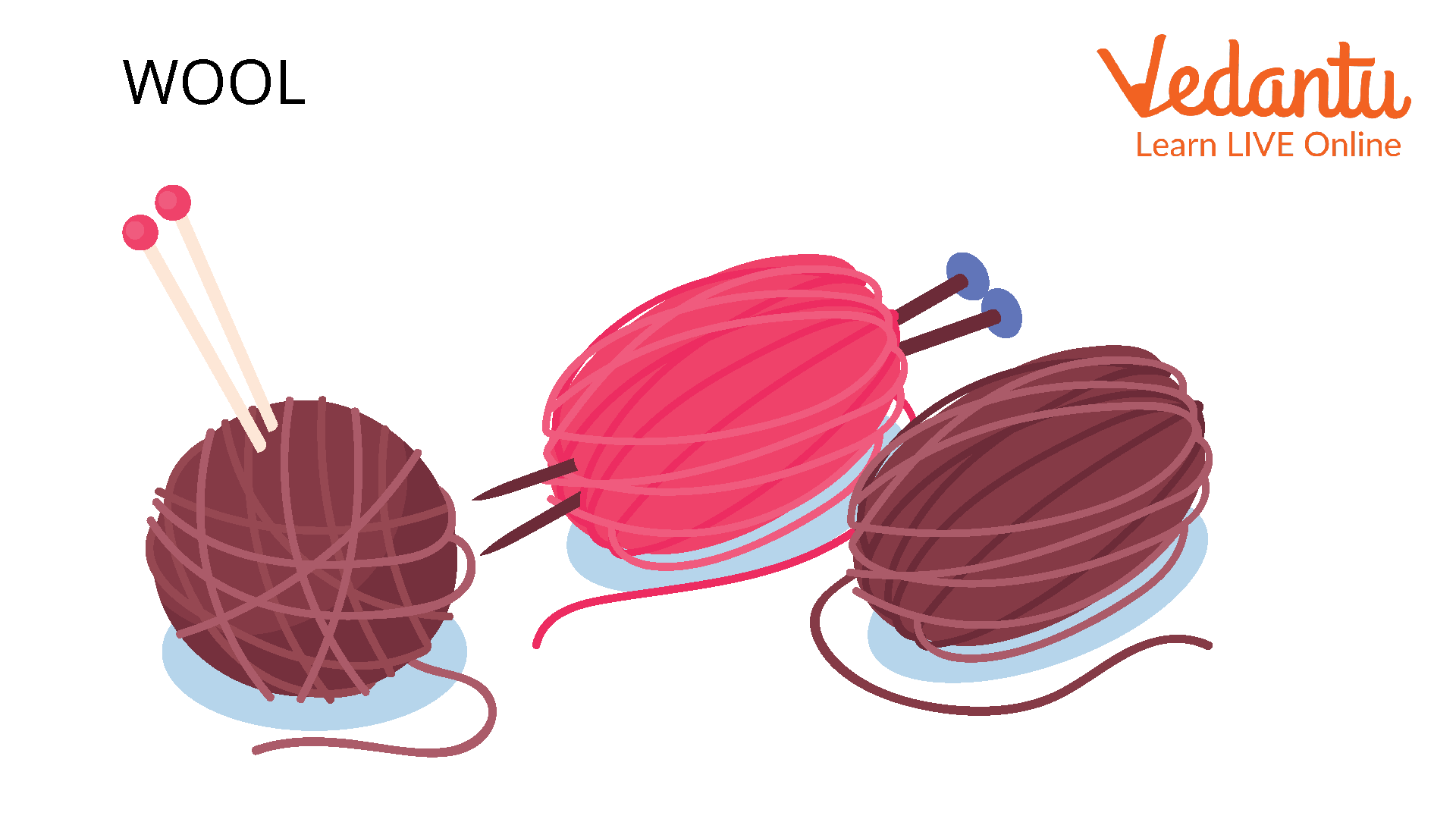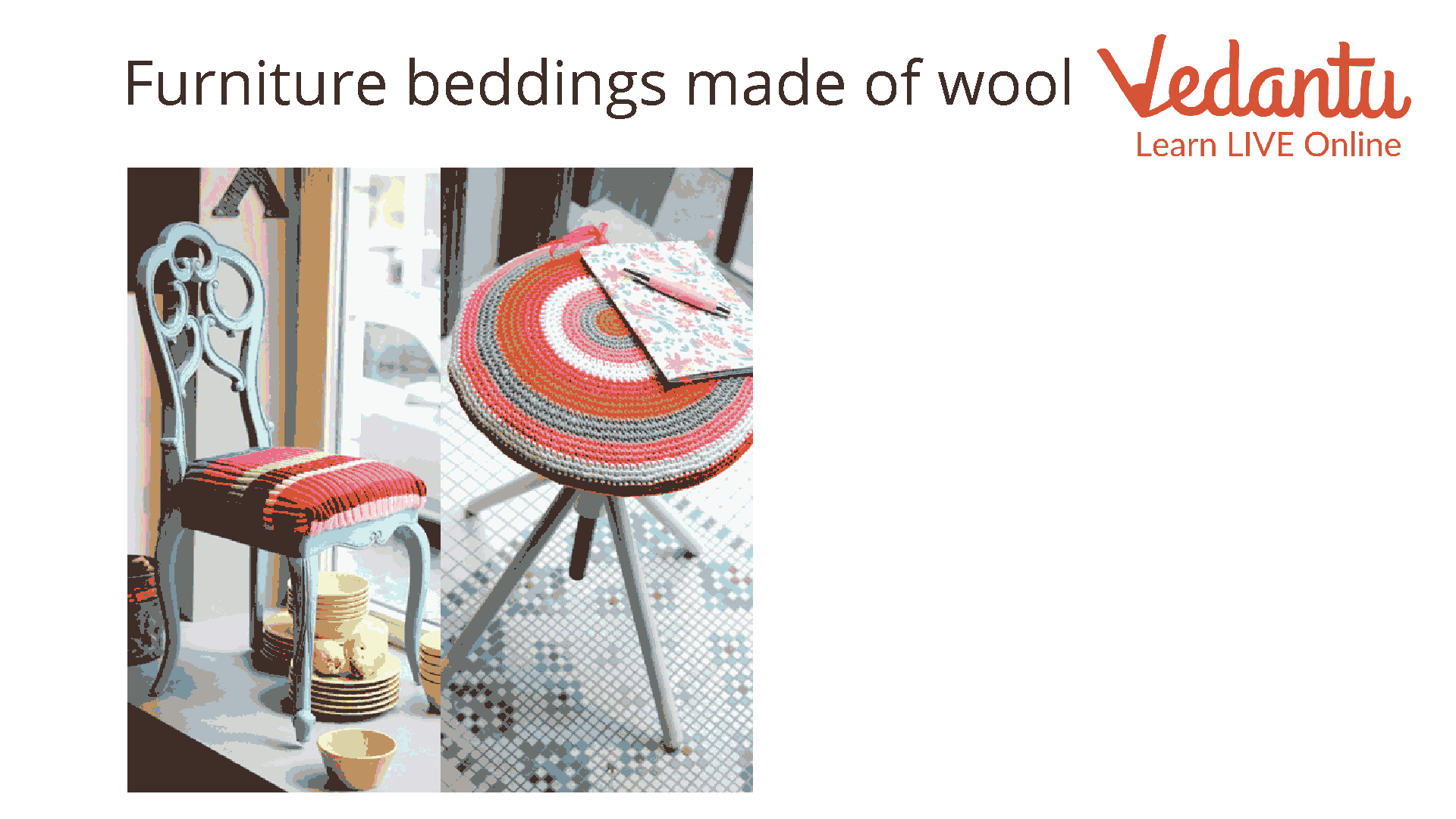




Introduction to Uses of Wool
Sheep can produce wool. In the winter, it helps keep them warm and dry. To keep the sheep cool throughout the summer, they sheared. In a factory, the wool is gathered and cleaned. After being cleaned and arranged, the wool is spun into yarn. This wool strand is exceptionally long and has been folded up. The wool is then sent to stores or factories where it can be used to make garments.

Wool
What is Sheep Wool Used for?
Sheep wool has long been employed in the textile industry to create common woollen goods like carpets, clothing, curtains, covers, and beds.
Due to their thermal qualities, they have also been applied in the construction business.
When used in a compost mixture, sheep's wool has various advantages, including weed and pest control.
Organic material can be substituted with wool as a sustainable, renewable, and environmentally beneficial material.
Wool Uses
Wool is used to make woollen yarns. These woollen yarns are used to create gloves, hats, and sweaters. Caps are used every season, whereas sweaters and gloves are used in the winter as it is warm.
Wool is used to create a variety of garments, including expensive suits (coats and trousers). Wool is used to make kids' wool clothing like sweaters and socks that keep them warm and safe from the cold.
Wool is used to make hats, scarves (mufflers), gloves, and other cold-weather clothing.
Blankets are made of wool.
Hand embroidery is done with woollen yarn for manufacturing tablecloths and floor mats.
Additionally, bedding and soft furnishings are made of wool.

Furniture Beddings are Made of Wool
Wool making
Shearing is the procedure used to remove hair from a sheep's body.
Scouring is the procedure of washing sheep's wool to get rid of dirt and dust.
Sorting is separating wool of high grade from the wool of lower quality.
Combining is the procedure used to remove tiny knots from wool.
Carding or Burr rRemoval - In this procedure, the fibres are separated one at a time, which removes a lot of dirt and makes many fibres lie opposite one another.
They die after combing the wool. The fibres have been dyed in a variety of colours.
Spinning is the last step in making yarn; the coloured fibres are straightened and spun.
Summary
Wool is the soft, curly, typically thick coating in many hairy mammals. Sheep mainly produce wool. Wallpaper, cushions, lampshades, and curtains are ordinary. Shearing, scouring, sorting, colouring, straightening, spinning, and combing are involved. There are different uses of wool, such as their usage in the textile industry, the mufflers we wear, the hats we have, and even some furnishings of wool and carpets.
FAQs on 5 Uses of Wool
1. What are the characteristics of wool
The first is that wool offers built-in UV protection, antibacterial and antimicrobial characteristics, and is simple to maintain. Wool is especially tough and stain-resistant.
2. Which wool is the best?
Merino sheep produce merino wool, primarily found in Australia's and New Zealand's hilly regions. It is unquestionably the most luxurious sheep wool since it is the finest, softest, and shines the best. It should be no surprise that luxury clothes and bedding companies like this fabric.
3. Wool was first used when?
The first wool apparel discovered dates between 4000 and 3000 BC; the early Persians found trading in wool to be highly profitable, and sheep and wool were traded throughout Africa and Europe. Sheep first made their way to Europe at what is now known as Marseille, France, from Africa via Egypt.









